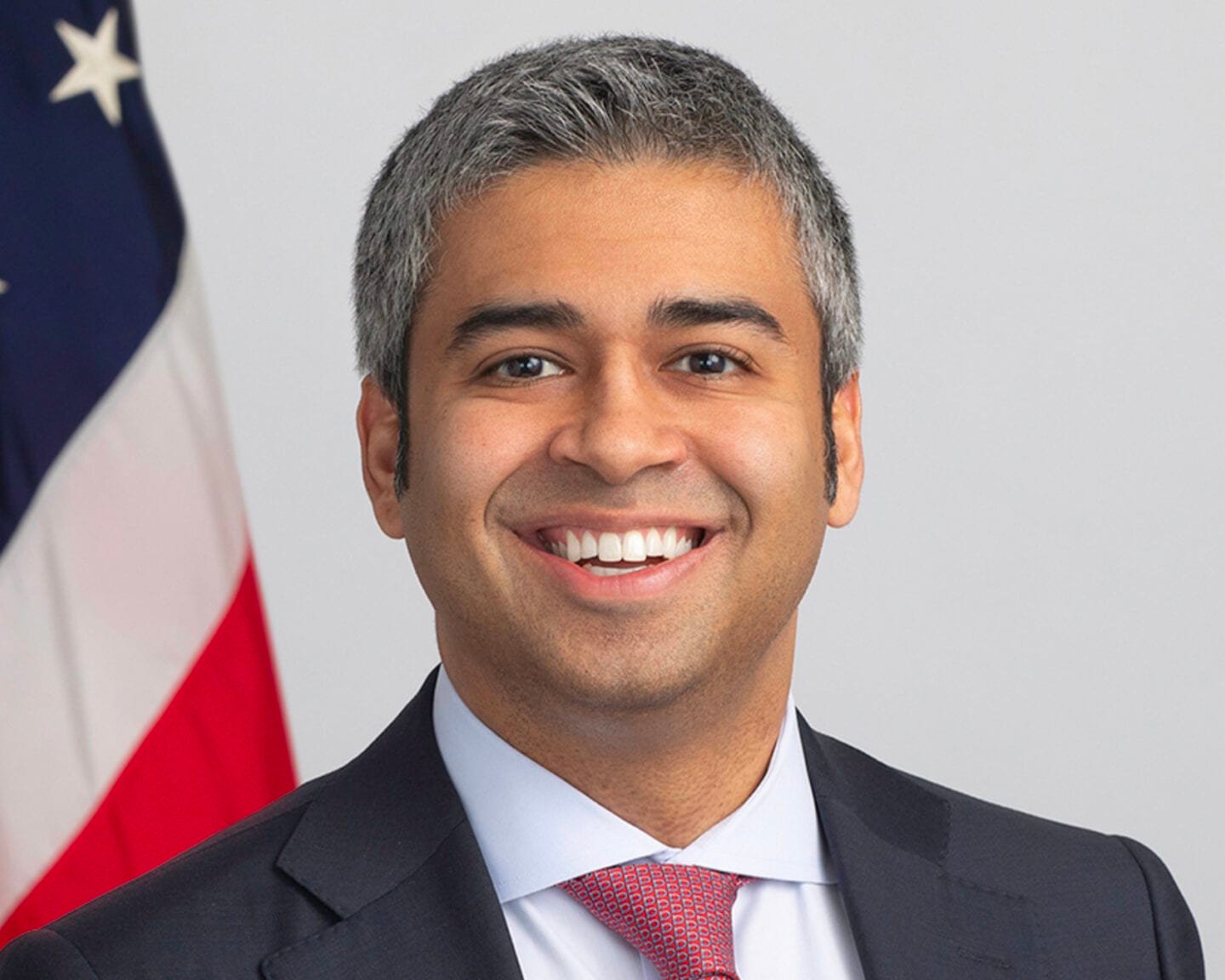
Peter Zeihan: What Would a Conflict in Taiwan Look Like?
Let’s discuss what China’s potential invasion of Taiwan would look like. Should China attack, both Biden and Trump have been explicit that the US would…
Thought Leader: Peter Zeihan

“It never rains, but what it pours,” sang Judy Garland to Mickey Rooney in 1938, memorably describing what happens “if Lady Luck should happen to desert you.”
You stub your toe, ouch,
You hit your elbow, ooh,
You bump your head, ooh.You step on a tack and you let out a howl.
There’s soap in your eyes and you can’t find a towel.
You try to comb your hair but can’t arrange it,
Spill orange juice on your dress and have to change it.Then all day long
Everything you touch goes wrong.
“The same thing happens in life,” the song goes on. “But on a very much larger scale.”
Too right. Poor humanity just can’t catch a break these days. No sooner does the Covid-19 pandemic appear to be receding than a new delta variant sweeps the world, far more contagious than earlier versions of the coronavirus. Simultaneously, there are disastrous floods in Europe’s Rhineland and China’s Henan Province. Huge wildfires rage in Siberia and in Oregon. And in a succession of countries — Afghanistan, Cuba and Haiti, to name just three — political order threatens to break down.
The idea of a time of troubles — a period when somehow everything goes wrong — is deeply rooted in the human imagination. In the book of Exodus, God inflicts no fewer than 10 plagues on Egypt. He turns the water of the Nile into blood. He sends frogs, then lice, then flies, then a pestilence that kills the livestock, then a plague of festering boils, then a hailstorm, then locusts, and then three days of darkness. He signs off with a disease that kills the first-born children of every Egyptian family — not to mention the first-born calves.
It never rains but it pours.
God had a purpose in plaguing Egypt: to persuade the Pharaoh to release the Israelites from bondage. In our secular age, we seek similar meanings in bad times. The obvious inference from images of cars reduced to flotsam and jetsam by torrential rain in places as far apart as Kreuzberg and Zhengzhou is that we need to get a lot more serious about reducing greenhouse gas emissions. No doubt. But there is more to all this tribulation than that.
Superficially, in the phrase made famous by Lemony Snicket, it’s all just “a series of unfortunate events” — no more than a very nasty coincidence that the latest wave of the pandemic should happen at the same time as so many extreme weather events and a wave of social and political unrest. On closer inspection, however, we can see that there are connections between these disasters — and that they are in fact parts of interlocking trends.
It looks as if the world is bumping up against some kind of ceiling. It appears that, given the constraints of our existing energy technologies, we cannot support much more than our current population of 7.9 billion humans without destabilizing the planet, even though the United Nations projects that we shall get to 10.9 billion by the end of the century. I doubt that. As if to curb our numbers, our technological advances and demographic expansion have created ideal conditions for significant, life-shortening disasters.
It is precisely the expansion of human settlement that has increased the probability of new zoonotic diseases emerging. It is precisely the growth of international air travel that has increased the probability of pandemics. It is precisely the way we have constrained major rivers with dams and rigid banks that has increased the probability of disastrous flooding, quite apart from still-rising carbon dioxide emissions.
This is not to say that we cannot overcome these problems. History suggests that we can. European populations by the 1300s had become rather too large in relation to the basic technologies of that era, at a time when the world’s population was just over 390 million. With most people engaged in subsistence agriculture, it did not take much — a succession of bad years, of bad weather and bad harvests — to render the population highly susceptible to a pandemic of bubonic plague.
The population of England began to decline before the Black Death struck in the 1340s. The combination of climatic disappointments and a novel pathogen led to demographic disaster. The plague then unleashed a kind of cascade, as mass death led to economic and social dislocation, which in turn led to religious and political upheaval.
At this point we move from coincidence to causation. In a vain attempt to ward off further divine retribution, thousands of European men wandered from town to town as flagellants, whipping and scourging themselves in collective acts of expiation. At the same time, in numerous towns — especially in Germany — Christian communities turned on the Jewish minority, whom they blamed for the plague.
The Black Death fundamentally destabilized European society. Drastic population declines led to labor shortages which led, in turn, to attempts by landlords and the state to bind peasants more strictly to the land. In England, these measures ultimately precipitated the Peasants’ Revolt of 1381.
As in our time, plague and war competed to shorten lives. It is not easy to wage war in a time of pandemic, but somehow the English and the French managed. For the next hundred years, the warring kingdoms clashed on land and sea, the efforts to seize territory from one another generally petering out when their armies fell too sick to keep fighting. It was the same story in Italy.
We are not only 700 years ahead of the people of that time. We are countless scientific discoveries ahead of them. Nevertheless, our experience resembles theirs in eerie ways. Waves of pandemic coincide with severe weather. These natural disasters then precipitate economic, social and political crises.
Predictably, it is some of the world’s weakest states that have been the first to succumb to this kind of contagion. With the U.S. intent on remaking the movie “Saigon 1975” in Kabul, Afghanistan is sinking back under the rule of the Taliban, a theocratic regime with a vision of social order that dates back even further than the Black Death.
Cuba, one of the last remaining communist dictatorships of the old type, is teetering on the brink of collapse, deprived of the revenue from tourism that kept its economy afloat and now held together (like its chilly northern European counterpart, Belarus) by brute repression. Haiti, a morass of anarchy and poverty that was barely a polity before, has now descended into complete mayhem following the assassination of its president, Jovenel Moise. Myanmar is on the brink of civil war in the wake of a military coup.
Other poor countries will go the same way. Some 155 million people across 55 countries suffered from acute food shortages or full-blown famine in 2020, according the 2021 Global Report on Food Crises, an increase of 20 million compared with 2019. The Democratic Republic of Congo and Yemen are among the hardest-hit countries. The latest Global Peace Index, published by the Institute for Economics and Peace, names Azerbaijan, Belarus, Burkina Faso, Honduras and Zambia as the five “most deteriorated countries” in terms of political stability.
Yet this contagion from pandemic to political chaos is not confined to the most wretched nations of the earth. The IEP estimates that there was a 10% increase in violent demonstrations in 2020 from the year before. Political instability deteriorated in 46 countries.
Not all those countries were dirt poor. Half of all people in Brazil, Mexico and the Dominican Republic report violence as the greatest risk to safety in their daily lives. Lebanon was once “the envy of the Arab world,” to quote Al Jazeera. But its per capita gross domestic product has fallen by a staggering 40% since 2018, the World Bank estimates, as a result of political paralysis, corruption and inflation. South Africa is the richest country in sub-Saharan Africa. But more than 200 people died in political violence in KwaZulu-Natal and Gauteng following the imprisonment former President Jacob Zuma.
To an extent not fully appreciated, the U.S., too, is experiencing unrest and instability. Since the extraordinary wave of protest that followed the murder of George Floyd in Minneapolis last June, there has been a marked increase in urban violence, specifically in the number of homicides, which rose by 25% in 2020. (Data for 2021 are patchy, but in Chicago the 2020 level has thus far been maintained.) At the same time, the deterioration of conditions in Central America has led to a surge of new migrants across the southern border.
Superficially — and to the relief of the mainstream media — political normalcy has been restored at the top, in the person of President Joe Biden, who has done his best to make the presidency dull again, after the four years of overexcitement under Donald Trump.
Yet this normalcy is illusory. Trump has not gone away. He remains the front-runner to be the Republican nominee in 2024. He retains an ardent base of supporters. Worse, the weird network of conspiracy theorists — who lean toward Trump politically — continues to deter a significant proportion of the population from getting vaccinated against Covid, ensuring that the next wave, brought to you by the delta variant, will kill tens of thousands.
In a poll published last week, one in five American adults said it was definitely or probably true that “the U.S. government is using the Covid vaccine to microchip the population.” Is there any real difference between such magical thinking and the superstitions that led medieval peasants to flog themselves?
The cascade of disaster is ubiquitous, in other words, as the social and political consequences of the pandemic, the lockdowns and extreme weather play out. Yet we should not deceive ourselves into thinking of 2020 as a strange annus horribilis that abruptly brought all these evils into the world. The trends toward both a pandemic and a crisis of public order were visible well before last year.
Covid was not the first public health emergency caused by a new coronavirus. SARS in 2003 and MERS in 2012 provided the overture to this dance of death. In the same way, the global peace index shows that the rising trend of public protest can be traced back 10 years. The IEP estimates that what it calls “major unrest events” increased by 251% between 2011 and 2019. (Interestingly, the same is not true of either war or homicide, both of which declined globally.)
Frequency of social unrest events globally over the last 35 years
Source: International Monetary Fund
A new paper published by three economists at the International Monetary Fund identifies a rising frequency of social unrest events since the mid-1980s, with peaks in 1999, 2011 and 2019. As Metodij Hadzi-Vaskov, Samuel Pienknagura and Luca Ricci point out, there is a kind of feedback loop, whereby a major unrest event is associated with a 1-percentage-point reduction in GDP six quarters after the event. They cite the yellow-vest protests in France in 2018 and the pro-democracy protests in Hong Kong a year later as examples of the process whereby unruly protests make a country’s economic situation significantly worse.
The most systematic attempt to explain such phenomena is by researchers led by Edward D. Lee at the Santa Fe Institute. Looking at statistics from the Armed Conflict Location & Event Data Project that cover warfare in Africa since 1997, Lee and his team hypothesize a kind of contagion effect. “At each newly infected region,” they write, “conflict becomes endemic, generating instability, news reports, and fatalities.”
What they call “conflict potency” only wanes as distance reduces both the relevance of the original bone of contention and the density of transport infrastructure. They describe the phenomenon of spreading violence as a “conflict avalanche.” I believe we are living through a global version of such an avalanche.
The reason I find this approach so attractive is it captures two important realities about the historical process. First, most states and societies are complex adaptive systems, meaning that the interactions of all the multiple elements are very difficult indeed to model accurately and are characterized by emergent properties and phase transitions. Second, the most important characteristic of human societies is the way social networks cause all kinds of contagion, from the spread of novel pathogens to the dissemination of crazy memes like “anti-vaxx.”
It is not for me to hypothesize what really lay behind the 10 plagues that struck Egypt during the captivity of the Israelites. Suffice to say that this was probably not the first time in human history that a combination of natural and man-made disasters left a whole nation vulnerable to multiple forms of contagion.
In the same way, there were reasons why Judy Garland had days when it didn’t just rain but poured. Addicted to amphetamines and barbiturates from an early age (booze came later), chronically insecure about her appearance, cursed in her love life (she was married five times), nearly always broke, and seriously suicidal on at least two occasions, Garland’s life was one of the great show-business train wrecks.
When Garland stubbed her toe, hit her elbow, and bumped her head, it was not just because Lady Luck had deserted her. In the same way, this cascade of disaster that we are living through is more than just bad luck; it has real and intertwined causes. Small wonder the billionaires have taken to exploring space. What used to be “the final frontier” is fast becoming the ultimate hedge. And at least in space it neither rains — nor pours.
Peter Zeihan: What Would a Conflict in Taiwan Look Like?
Let’s discuss what China’s potential invasion of Taiwan would look like. Should China attack, both Biden and Trump have been explicit that the US would…
Thought Leader: Peter Zeihan
Dr. Sanjay Gupta: Rethinking Health Rules We Grew Up With
“Drink your milk,” we are told as children. CNN Chief Medical Correspondent Dr. Sanjay Gupta examines our practice of continuing to drinking cow’s milk as…
Thought Leader: Sanjay Gupta
Erika Ayers Badan: Women in the Workplace Wake-Up Call
This headline somehow feels both shocking and completely unsurprising. The McKinsey and Lean In Women in the Workplace study is out, and the takeaway is…
Thought Leader: Erika Ayers Badan

